In the world of football, strategies and formations get implemented and refused every day. But some tactics used throughout the years have inspired generations of footballers, coaches all over the world. The influences are still relevant. Here are six revolutionary tactics that evolved over time and transformed the world of football forever.
#6 FALSE 9
The ‘False 9’ tactic was actually a very old idea. The term was derived from number nine (9), a traditional shirt number for centre-forwards. Normally a centre-forward stays up the field just behind defenders’ line until they get an opportunity to move past in space. The tactic was first introduced to the world when Matthias Sindelar, centre-forward of the great Austrian team of the 1930s, dropped deep in the middle of the park drawing centre-backs from their natural positions. Thus creating a chance to beat the relatively slower defenders in the open space created by drawing the centre-backs in the midfield. This also allowed the wingers or the wide forwards to get behind the defence line easily.
The tactic went out of fashion as the regular No. 9 became the standard. But in 2005, realising Francesco Totti’s significant playmaking ability, the Italian manager, Luciano Spalletti resurrected the forgotten position in Roma. He brought Totti into withdrawn role creating a numerical advantage in the central area of the pitch. Roma managed to attain a record 11 match victory streak in Serie A.
The term is mostly associated these days with Messi from Guardiola era. In 2009, Pep Guardiola helped to initiate the “Messi era” when the little Argentine was featured as ‘False 9’ in El Clasico. The then 21 years old Messi drifted down in the middle of the pitch, enabling Samuel Eto'o to slot into the right wing. Messi’s dropping down in the midfield created confusion among the Real Madrid defenders who were unsure of whether to follow him to the midfield or hold the deep defence line. Thus, Real Madrid defenders constantly found themselves out of position, which resulted in a 6-2 humiliating loss against Barcelona.
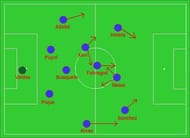
The term has been immensely misinterpreted throughout the years. For instance, Germany opting to play Mario Goetze or Thomas Mueller as centre-forward was labelled as False 9 system. But in reality, they were forced to adapt this for complementing the shortage of eminent striking force.
Over the years and after many attempts, some counter tactics have been invented and executed successfully by the managers to defy this strategy. For example, Jose Mourinho’s “Parking the Bus” approach has been found extremely useful in halting the False 9 strategy. But it is still a strong weapon when put in the hands (or, should I write legs?) of the right person, and Lionel Messi was certainly the right man.
#5 CATENACCIO

‘Catenaccio’ is an Italian word which roughly translates to ‘Chain’ or ‘Door Bolt’. This is a \defensive strategy which originated in the 1950s and 1960s. In the Catenaccio system, four defenders are instructed to mark one static opponent tightly and stay close to the attacker, while a sweeper or ‘Libero’ drifts behind the three defenders. The Libero is mainly responsible for retrieving lose balls, double marking the forwards and initiating counter attacks. Germany's Franz Beckenbauer and the great Italian, late Gaetano Scirea are the classic examples of sweepers.
The flagbearer for this system is Helenio Herrera. His Inter Milan side dominated Italian and European football, securing three Serie A titles and two European Cups in the early 1960s. Herrera’s tactic was sometimes labelled as anti-football. But the Argentine coach had insisted that 'Catenaccio' has been degraded by its imitators.
Herrera’s version actually inspired several positive innovations such as modern attacking full-backs who are directly descended to Inter Milan Left-Back Giacinto Facchetti. There is no denying of the fact that the attacking full-backs in modern football have become an integral part. Facchetti was admired for his pace and aggressiveness upfield. He ended the season as the highest scoring defender in Serie A when he scored 10 goals in 32 games in 1967. The record which remained unbroken for 35 years.
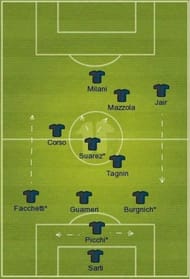
The Italian league and players have long been defined by Herrera's defensive style of play. However, Catenaccio became less popular with time as the best teams started adapting to the ‘zonal marking’ system. Meanwhile, the modern defensive midfielder took the place of the sweeper, a position which was always a midfielder in disguise.
The beginning of the end of Catenaccio era could be traced back to the early 1970s as Inter lost in the European Cup final and AC Milan was thrashed 6-0 by Ajax in European Super Cup Final.
#4 TOTAL FOOTBALL

The purpose of "Total football" was to cultivate versatile, technically superior and fluid players who could easily and rapidly change positions in a match. For example, a midfielder is expected to slot into its Centre-half position when a defender comes up the field to join the attack. Similarly, if a striker goes wide, the winger would move into the central position. This interchange of positioning made the whole formation unpredictable and almost impossible to mark individual.
The system first became famous in the 1950s, thanks to the Hungary National Team and Burnley FC. It was further developed and given wings by Ajax and the Netherlands manager Rinus Michels and the club Captain Johan Cruyff. Dizzying carousel of interchanging players and constant movement off the ball left the static man-marking opponents clueless. This led Ajax to three consecutive European Cup titles in 1970-73 and the Dutch to the World Cup final in 1974. They narrowly lost the game 2-1 against West Germany.
Ajax received worldwide praise and became a symbol of positive and exciting response to the functional solidity of Catenaccio. The desire to play total football formed in every level of Ajax’s organisations, as young players in the club academy started to learn every position in a 4-3-3 formation.
Legendary Johan Cruyff became a coach after retirement and adopted some fluidity and aggression from Michel’s strategy to his own template. He ended up winning four successive Spanish League titles and one Champions League title with Barcelona. His Barcelona team was nicknamed “The Dream Team” as the Catalans achieved everything possible. Cruyff implemented a 3-4-3 Diamond formation. A young player called Pep Guardiola played in the heart of the midfield.
#3 TIKI-TAKA
Tiki-Taka is essentially based on quick short passes with players continuously moving to find space and create triangles pulling defenders around to find and exploit the tiniest gaps. The Spanish national team under Luis Aragonés and Vicente Del Bosque was the spawning ground of Tiki-Taka.
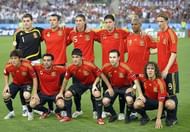
The system produced a generation of incredibly talented but physically small midfielders. They possessed superior technical ability and understanding of space which became determinant in overcoming stronger opponents. Pep Guardiola took the system to its greatest extent while he was a part of Barcelona in 2008-12. Lionel Messi was put deep, full-backs were pushed high and defenders played out of the back which maximised the passing options for the twin geniuses, Xavi and Iniesta. Even the goalkeeper was another passing option under Guardiola's system. The goalkeepers were encouraged to receive the ball when under pressure and not aimlessly kick the ball long.
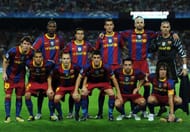
It has received universal praise and often been described as “the pinnacle of the beautiful football”. However, over the period, the weaknesses of this philosophy had been exposed in humiliating fashion, especially when Barcelona succumbed to 7-0 (Aggregate) defeat against Bayern Munich in 2012-13 Champions League Semi-Final.
Lately, it has been considered an unfashionable boring way to play football and sometimes even called “passing for passing’s sake”. Unimaginative, directionless possession had often been labelled Tiki-taka as the endless passing failed to find a cutting edge without the scalpel-sharp instinct of Xavi. When Spain took an early exit in the 2014 World Cup in the group stage after losing against Chile and Netherlands, the press claimed Tiki-Taka has finally met its faith. But as documented earlier that a great idea never dies and finds its way back. We are hopeful that Tiki-Taka will find its place once again in football. The strong counter-attacking teams have been the most successful against Barcelona's Tiki-Taka. But the strategy which has been proven to be most effective in tackling Tiki-Taka is “parking the bus”.
#2 PARKING THE BUS
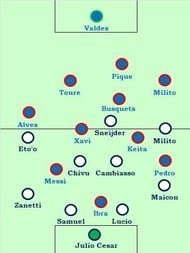
“Parking the bus” is a derogatory term used for describing a defensive display of football. This essentially means all the players defending behind the ball for the whole time and Playing reactively for a lucky break. Reactively does not necessarily mean derogatory. Heynckes’s Bayern played reactively when they beat Barcelona by 7-0 (Aggregate).
Almost all the best teams these days use this tactic against strong opponents or after getting a lead. But managers are most likely to deny that as it is often called Anti-Football. One of the famous examples of this would be Inter Milan vs Barcelona where Jose Mourinho featured a 4-5-0 formation. Mourinho’s Inter displayed a strong organised defensive play. While Mourinho did not invent this, he definitely brought this in English football and he is the ‘Master’ in this.
This is often confused with Catenaccio system, but in reality, they are not same at all. Although both are defensive in nature, the key difference is the use of Libero. Earlier, it has been described that the Libero plays the most crucial role in a Catenaccio system. But in “Parking the Bus” there is no place for a sweeper.

Although it has been called “Anti-Football” and ‘boring’, it is definitely not an easy task to execute in a match. The players need to hold their position behind the ball and adjust their positioning constantly with the position of the ball. Lately, in the 2013-14 season, Deigo Simeone in Atletico de Madrid had successfully executed this tactic which led them to the La Liga title and Champions League Finale. They lost the finale against their arch-rival, Real Madrid.
#1 GEGENPRESSING
This is the latest trend in world football. 'Gegenpressing', unlike the others on our list, is not a complete gameplan. It is a variant of classic pressing football. The pressing broadly means closing down opponent's passing lane and trying to win the ball back as soon as possible. The pressing system used by every team varies according to the formations.
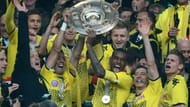
Some teams prefer to press halfway up the field while others will go all the way to the opponent goalkeeper. Some will let the opponent reach the defensive half before springing an ambush with defenders running to put the opponent on the ball under pressure. The father of pressing is Marcelo Bielsa whose 3-3-3-1 formation with Argentine and Chilean National teams were designed specifically to create a numerical advantage for his team in any situation. His high energetic playing style has inspired a generation of managers such as Mauricio Pochettino, Jorge Sampaoli. Guardiola called him the greatest manager of all time. Guardiola's pressing system in Manchester City is vastly inspired by Bielsa's strategy.
But the ‘Gegenpressing’ system is mostly popularised by Jurgen Klopp who called ‘Gegenpressing’ the best playmaker in the world. His high up-the field pressing brought Borussia Dortmund two consecutive Bundesliga title in 2011 and 2012 and led to a Champions League Finale.
Klopp’s Gegenpressing is broadly based on a principle of winning the ball back. According to Klopp, the best moment to win the ball is immediately after the team has lost it. The opponent is more likely to lose the ball at this very moment as the opponent is still looking for passing options and probably have taken his eye off the game to win back the ball and evidently would be exhausted after making the tackle. All these factors make the opponent most vulnerable at this very moment.
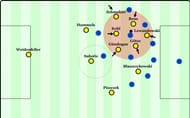
There are numbers of variants of Gegenpressing. For instance, if the man on the ball does not possess a remarkable passing skill, he might not be pressed much. But the passing options must be blocked i.e. intercepting the ball from reaching to possible recipients. At Dortmund, Klopp insisted on pressing the ball carrier and pressing as much as possible even if the team loses some shape here and there.
The teams have to be absolutely compact and everybody should put a collective effort. If a gap remains open, the opponent would be able to play a pass through the gap. In Dortmund, when they played with the 4-2-3-1 formation and the wide players would drop back to help the defence.
The pressing team must also realise when to stop pressing because firstly, the energy level will drop. And secondly, the opponent will be able to play a long ball in space behind the defence. If the opposing team manages to make a breakthrough by playing a long ball behind the defence, a sweeper-keeper (for example Manuel Neuer) would be effective in preventing the counter-attack.
